Text
Dec 11 1914 OTD New Japanese Dreadnaught launched in Golden Shower

El Paso Herald #OTD Dec 11 1915
New Japanese Dreadnaught launched in Golden Shower
Yokosuka. Japan. Dec 11-Amid a roar of "banzai," the superdreadnaught Yamashiro [ 山城, "Mountain castle" ] which will carry 12 14-inch guns and which is about the same size as the United States superdreadnaught Pennsylvania, was successfully launched at the Yokosuka naval dock yard. The emperor was represented by prince Hiroyasu Fushimi, who delivered an imperial message to vice admiral Fujii, the commandant of the station. The signal which sent the huge battleship into the water also released the cage of pigeons which took wing above the moving battleship and at the same time released a shower of gold leaves which sprinkled both ship and spectators.
The Yamashiro has a displacement of 30,600 tons and a speed of 22 knots an hour. In addition to 12 14-inch guns she will carry 16 6-inch guns. Her armor plate is a foot in thickness. She is a sister ship of the Fuso which was launched several months ago.
During WWII it was sunk during the Battle of Surigao Strait, on Oct 25 1944

34 notes
·
View notes
Text
Piper Daniel Laidlaw
London Gazette, 18 November, 1915. For most conspicuous bravery prior to an assault on German trenches near Loos and Hill 70 on 25th September 1915. During the worst of the bombardment, when the attack was about to commence, Piper Laidlaw, seeing that his company was somewhat shaken from the effects of gas, with absolute coolness and disregard of danger, mounted the parapet, marched up and down and played the company out of the trench. The effect of his splendid example was immediate, and the company dashed out to the assault. Piper Laidlaw continued playing his pipes till he was wounded.
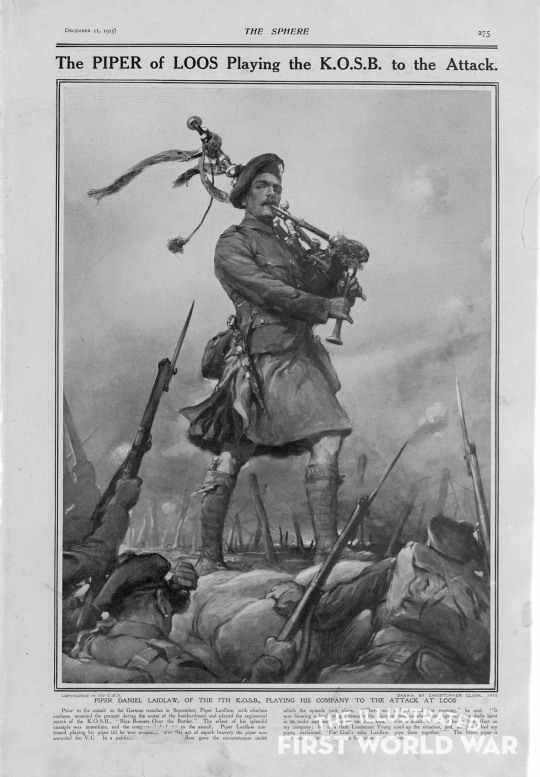
Issue 829. - Vol 63 - Dec 11 1915 - Sphere
Prior to the assault on the German trenches in September, Piper Laidlaw, with absolute coolness, mounted the parapet during the worst of the bombardment and played the regimental march of the K.O.S.B., “Blue Bonnets Over the Border.” The effect of his splendid example was immediate, and the company ... to the assault. Piper Laidlaw continued playing his pipes till he was wounded. For his act of superb bravery the piper was awarded the V. C.
In a publish... gave the circumstances underwhich the episode took place. “There was a light wind that morning. he said. “It was blowing a bank of gas towards the German trenches when their high-explosive shells burst in its midst and sent it among our own men. For a minute or two it had a bad effect on my company; but in a flash Lieutenant Young sized up the situation, and, noticing I had my pipes, exclaimed, ‘For God’s sake, Laidlaw, pipe them together.” The brave piper is here seen playing the pipes in full view of the enemy.
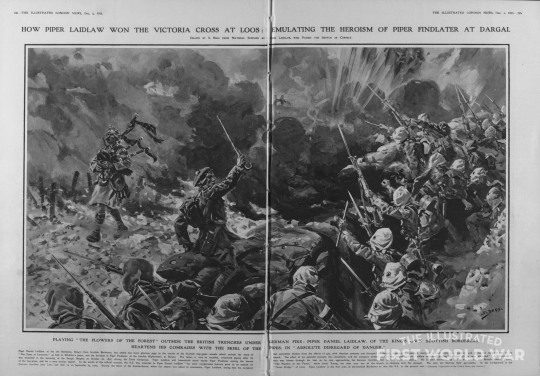
Dec 4 1915 - Illustrated London News
Piper Daniel Laidlaw of the 7th Battalion, King’s Own Scottish Borderers, has added one more glorious page to the annals of the Scottish bag-pipes-annals which include the story of ”The Pipes at Lucknows,” as told in Whittier’s poem, and the heroism of Piper Findlater, of the Gordon Highlanders, at Dargai. The latter, it say be recalled, continued piping after he was wounded in the storming of the Dargai Heights on October 20, 1897, during the Tirah Campaign. Piper Laidlaw will henceforth stand beside Piper Findlater among the heroes of the bag-pipes, and for a very similar exploit. In the words of the official account, the V.C. was awarded to Piper Daniel Laidlaw “for most conspicuous bravery prior to an assault on German trenches near Loos and Hill 70 on September 25, 1915. During the worst of the bombardment, when the attack was about to commence, Piper Laidlaw, seeing that his company was somewhat shaken from the effects of gas, with absolute coolness and disregard of danger, mounted the parapet, marched up and down (i.e., outside), and played his company out of the trench. The effect of his splendid example was immediate, and the company dashed out to the assault. Piper Laidlaw continued playing his pipes till he was wounded.” A fragment of wire was blown through his foot as he was approaching the German trenches, but he still went on piping. He is seen marching up and down outside the British trench, playing “The Flowers of the Forest,” while Lieut. Young, the neat man out of the trench, is climbing over the parapet. The men are wearing their gas-masks. In the background is the ” Tower Bridge ” of Loos. Piper Laidlaw is the first man of the Scottish Borderers to win the V.C. in the present war.
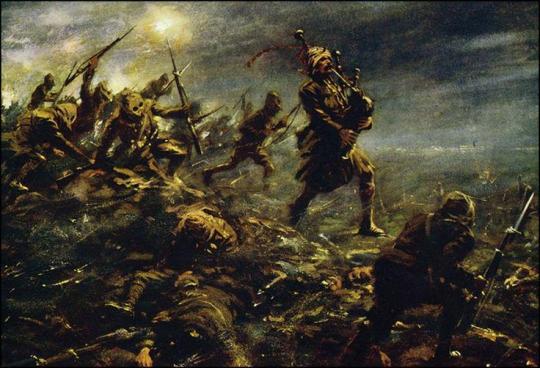
IMAGE number: LLM976461
Piper Daniel Laidlaw marching up and down the parapet of his trench playing his pipes to rally men shaken by the effects of gas, Battle of Loos, 25 September 1915. Illustration for Deeds That Thrill The Empire (Standard Art Book Co, c 1919).
Artist: Bagdatopoulos, William Spencer (1888-1965)
22 notes
·
View notes
Photo


Colourized by Frédéric Duriez
Date: Late 1918
Ref: 1/1-002081-G
New Zealand soldiers preparing a meal near a damaged German tank during World War I. A field cooker is steaming behind them. Two soldiers are cutting food on a table while others look on. Photograph taken possibly at Pont-a-Pierre, France, late 1918 by Henry Armytage Sanders.
41 notes
·
View notes
Text
US Railway Guns
Oct 29 1918 #OTD In Thierville, France, a photographer takes these photos of a 14-in/50-caliber railway gun in action. Its Barrel was 58 ft (17.780 m) long and had a Caliber of 14-in (355.6 mm); it fired a shell that weighed 1,400 lbs (640 kg).


National Archives Identifier:55216460 Local Identifier:111-SC-28503

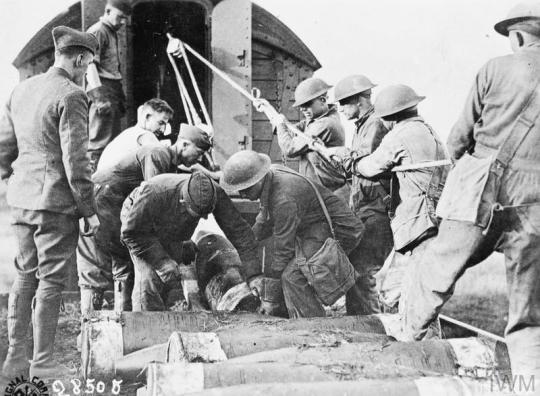
National Archives Identifier:55216470 Local Identifier:111-SC-28508
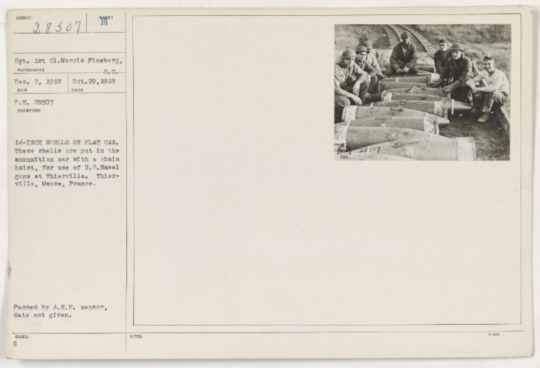
National Archives Identifier:55216468 Local Identifier:111-SC-28507
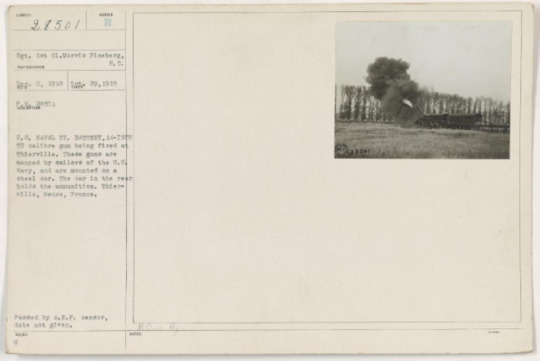

National Archives Identifier:55216456 Local Identifier:111-SC-28501

National Archives Identifier:55216458 Local Identifier:111-SC-28502

National Archives Identifier:55216464 Local Identifier:111-SC-28505
12 notes
·
View notes
Photo
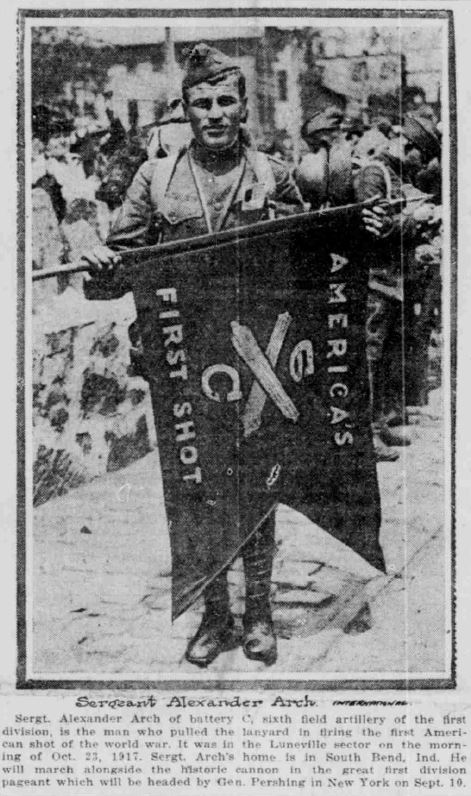
South Bend News-Times., September 10, 1919
Around 6AM Oct 23 1917 #OTD Sgt Alexander Arch of Battery “C” 6th FA Reg, 1st FA Bde, American 1st Div, shouted “fire” to 75mm field gun crew. This was America’s 1st artillery salvo against Imperial Germany in #WWI. Arch recalls it was foggy that morning and it was impossible to see if it hit their target. Alexander S Arch was given a hero's welcome when he returned to South Bend, Indiana and a street was named after him. When Arch visited the House of Representatives, in Washington, he was given a three-minute standing ovation. He was on active duty throughout #WWII and was awarded the Silver Star and Purple Heart medals. Arch kept the shell casing and it is still in his family.

South Bend News-Times., June 7, 1918
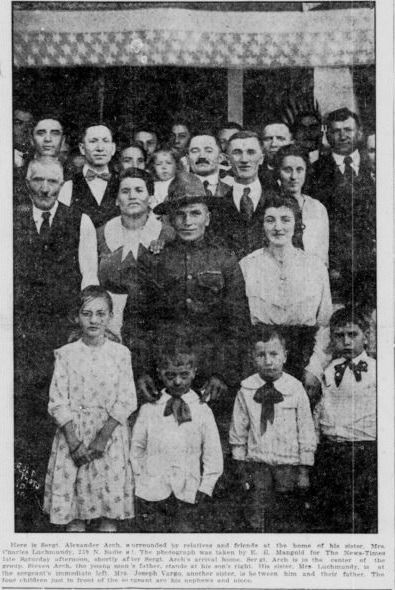
South Bend news-times., September 29, 1919

U.S. Army. First Sector Occupied by Americans 1917, inscribed: "First shot in the war Oct. 23, 1917 6:30 am. . . ." U.S. Army base map, 1918. Printed map annotated in color. Hines Collection, Geography and Map Division, Library of Congress (195.00.00) Col Scott, Maj Starkey, Capt McLendon, Sgt Alexander Arch
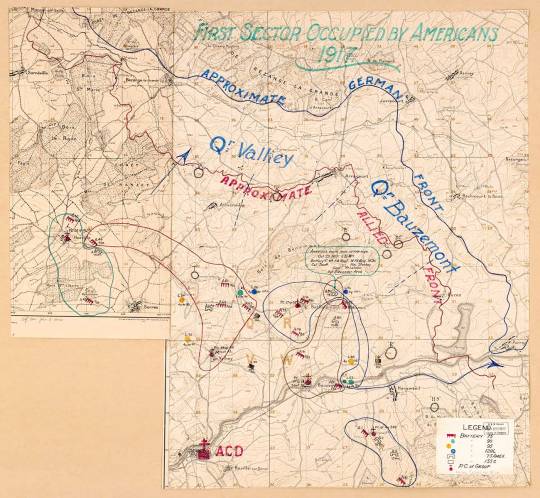
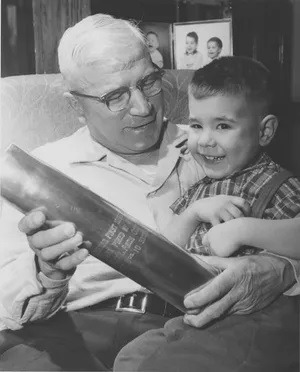
World War I veteran and South Bend resident Alexander Arch, left, in 1957 shows his grandson, Alex Arch III, the shell casing from the shot Arch fired upon the Germans on Oct. 23, 1917. Tribune File Photo
23 notes
·
View notes
Photo
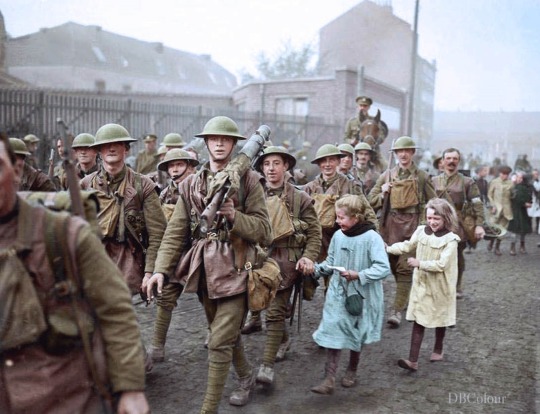
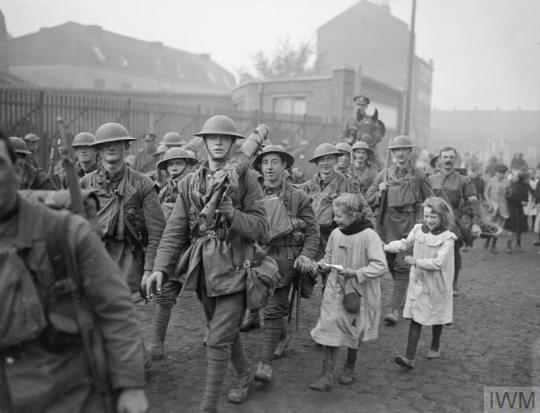
IWM Q 9579
Oct 18 1918 #OTD During 100-day Offensive, 8th Battalion, King's (Liverpool Regiment, Liverpool Irish, 57th Division) enters Lille, France. City had been under Imperial German occupation since Oct 13 1914. The soldier carrying a Lewis machine gun is Pte Arthur John O'Hare 307465.
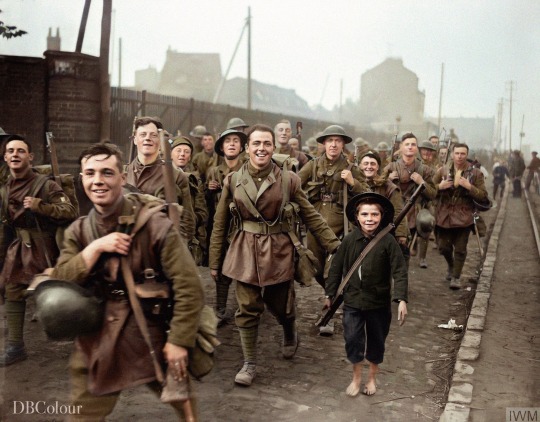

IWM Q 9574

IWM Q 9586
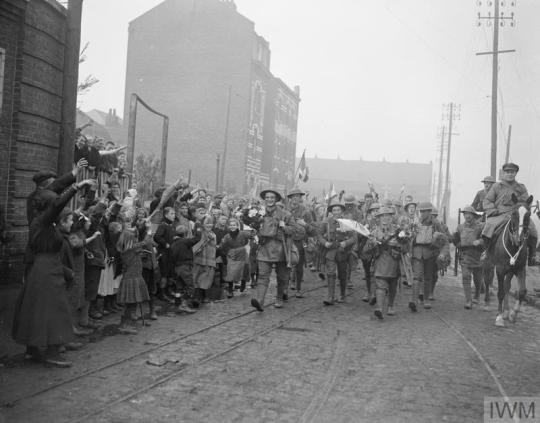
IWM Q 9580
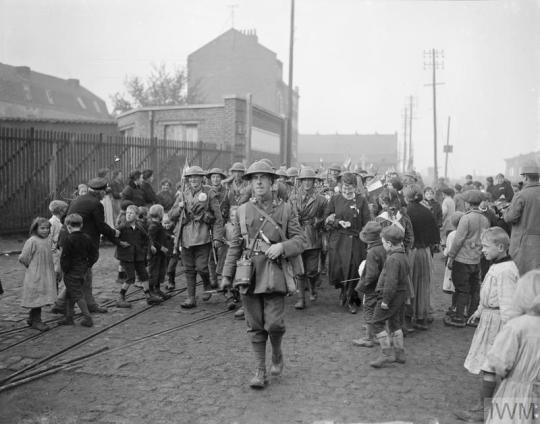
IWM Q 9572
84 notes
·
View notes
Photo
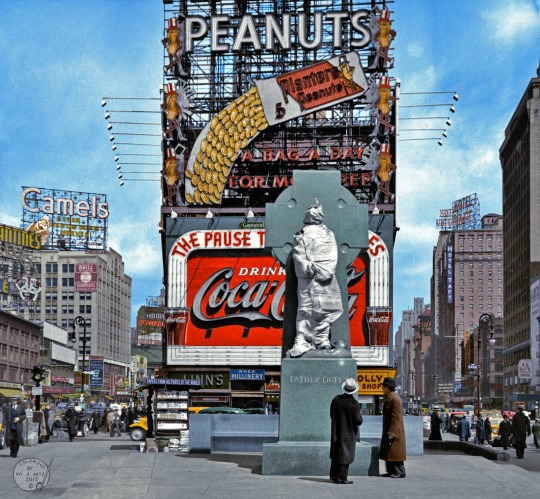

Colourized by aviakatz original B&W by Peter Sekaer
Canadian, Francis Patrick Duffy, chaplain for the American 165th Infantry Regiment was awarded Distinguished Service Cross for tirelessly and unceasingly care of the wounded and dying men in the village of Villers-sur-Fere, France, from Jul 28-31 1918


Colonel "Wild Bill" O'Donovan, left, and Father Francis Duffy, chaplain of the 69th New York, returning from France after World War 1.
19 notes
·
View notes
Text
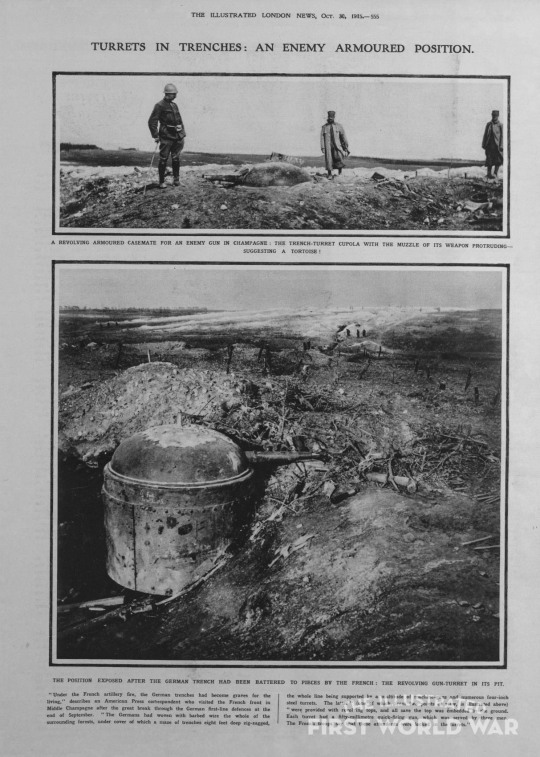
” Under the French artillery fire, the German trenches had become graves for the living,” describes an American Press correspondent who visited the French front in Middle Champagne after the great break through the German first-line defences at the end of September. “The Germans had woven with barbed wire the whole of the surrounding forests, under cover of which a maze of trenches eight feet deep zig-zagged, the whole line being supported by a multitude of machine-guns and numerous four-inch steel turrets. The latter ” (one of which, from two points of view, is illustrated above) ” were provided with revolving tops, and all save the top was embedded in the ground. Each turret had a fifty-millimetre quick-firing gun, which was served by three men. The French troops say that these attendants were locked in the turrets.”
Illustrated London News Oct 30 1915

Illustrated London News #OTD Oct 16 1915 photo of German Trench Casemates or Turret
German Mobile Turret
A number of armoured Imperial German Turrets that appeared to be mobile were captured by Allied forces during #WWI:
Apr 10 1917 #OTD During the Battle of the Scarpe, Ernest Brooks takes these photos of an armoured mobile German machine-gun strong point captured in Tilloy
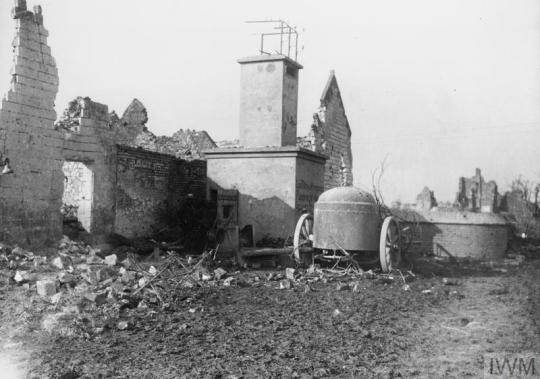

IWM Q 1999, IWM Q 2000
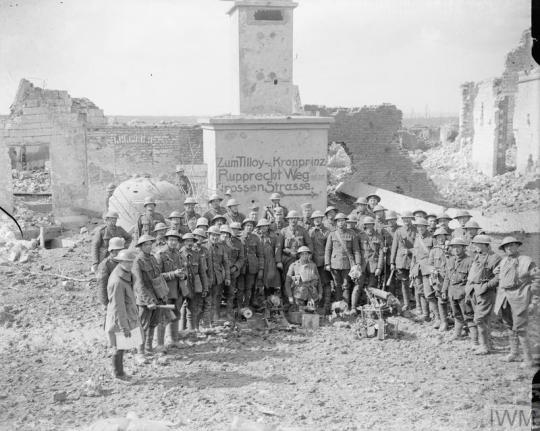
IWM Q 5131

IWM Q 5128
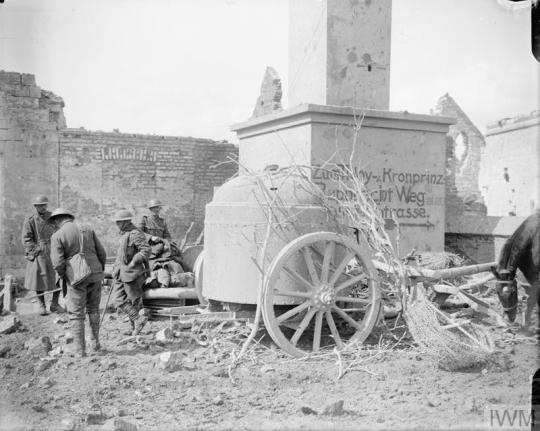
IWM Q 5132
The newspaper “Excelsior” publishes a pic of a gun turret in Paris on Friday, Jun 16 1916
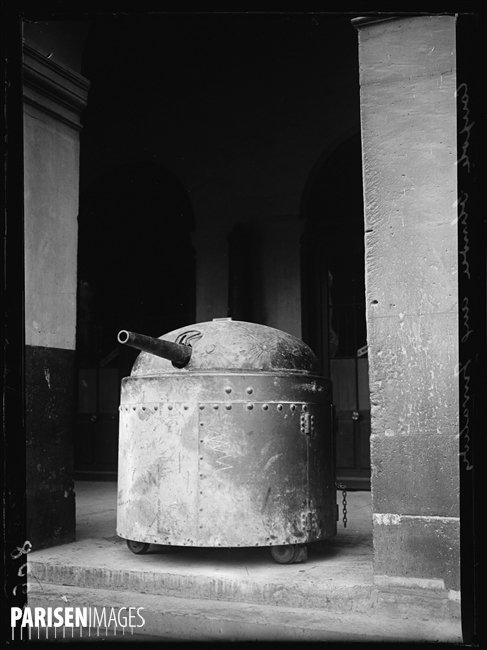
The Indiana, Pennsylvania newspaper The Patriot #OTD Dec 11 1915 publishes this picture of a captured German Turret captioned as “This is the first picture of a German portable turret which was captured by the French in Champagne. In it were found three gunners who were shut off from the outside. Death or capture is their lot, according to reports, as chance of escape is out of all possibility. ”
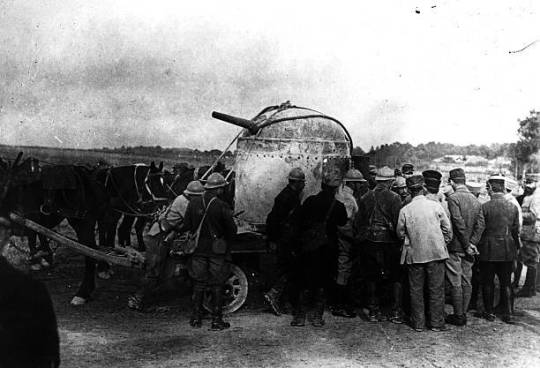

turrents, turrent
35 notes
·
View notes
Text
Frank Hurley “Photoshops”

Colourized by u/BaptistePierre
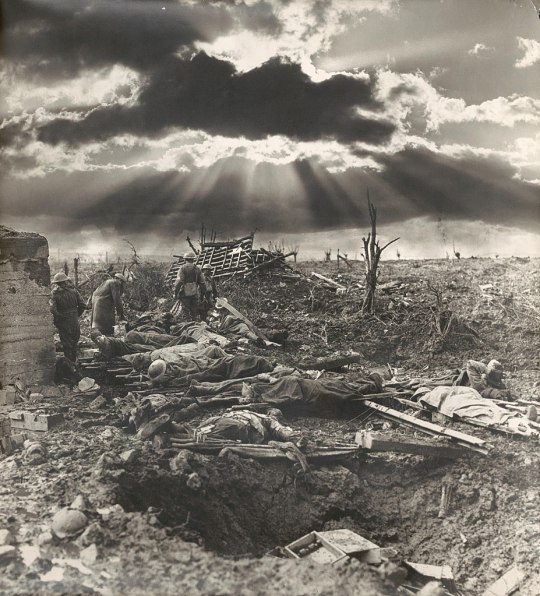
Call Number: PIC FH 10882 LOC H8/14
Oct. 2, 1917
I sent in my resignation this morning and await the result of igniting the fuse. It is disheartening, after striving to secure the impossible and running all hazards to meet with little encouragement.
Oct. 6, 1917
I am sending in 150 negatives this week. Headquarters have given me permission to make six combination enlargements in the exhibition! So I withdrew my resignation. They must at least appreciate my efforts, as they were dead against this being done. However, it will be no delusion on the public as they will be distinctly titled, setting forth the number of negatives used, etc….
Frank Hurley diary

Oct 12 1917 Frank Hurley takes this photo, AWM E01202, of a First Aid Post near Zonnebeke Railway Station.
Australian infantry wounded at a First Aid Post near Zonnebeke Railway Station. There are two conflicting sets of identification supplied for this image. Identified: Private A W Moss, 9th FAB (1); Private V E Reid, 10th FAB (2); 2nd Corporal P Pratt, 10th FAB, or Staff Sergeant F W Gray 9th FAB (3); Private C R Costain 10th FAB or Private J Cooke, 9th FAB (4). The pillbox (left) is identified as 'Jury'. This forms part of two Hurley composite images held at E01202A and E01202B.
Other versions:
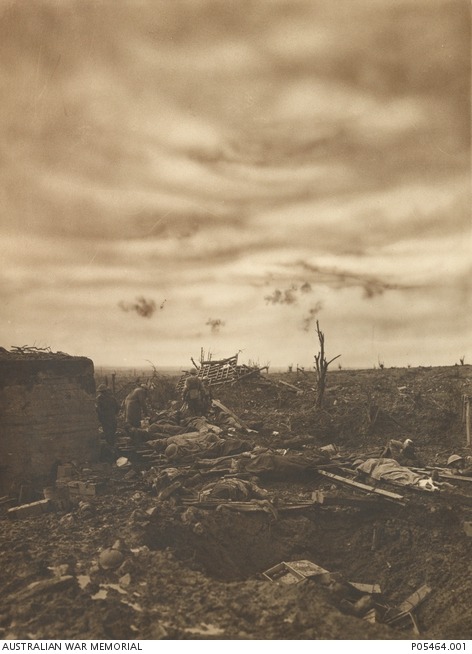
AWM P05464.001
This original hand-finished print is based on a photograph taken by the Official Photographer Frank Hurley (E01202); a heavy and foreboding sky and artillery shell bursts have been added to Hurley's original negative. This photograph was owned by Father Cecil Lonergan, a Catholic priest, who served as a Chaplain in the 4th Infantry Brigade in France and Belgium during the First World War. It is possible that Father Lonergan commissioned this work as a commemoration for a friend and fellow priest, Father Michael Bergin, an Irishman who was killed in action on 12 October 1917, the date Hurley's photograph (E01202) was taken. Father Bergin, a schoolteacher at Holy Family College in Cairo, attested on the Gallipoli Peninsula and who served as a chaplain with the 5th Light Horse Regiment, was with the 51st Battalion when he was killed at Passchendaele, not far from where this photograph was taken. Father Bergin was buried in the Reninghelst Churchyard Cemetery on 14 October 1917 by his friend Father Lonergan. Father Bergin was posthumously awarded the Military Cross 'for distinguished service in the field'. This hand-finished work, by an unknown artist, has some similarities to a number of composite photographs made by Frank Hurley and also based on the same original image (E01202). However, we do not believe Hurley was responsible for this particular work. See also E01202A and B for versions of the Hurley composite photographs.

AWM E01202A
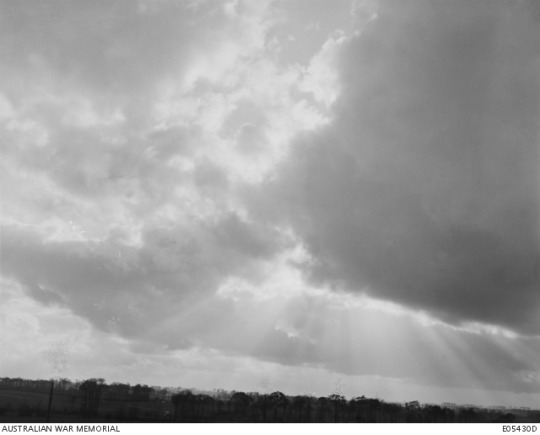
AWM E05430D - Photo clouds were taken from
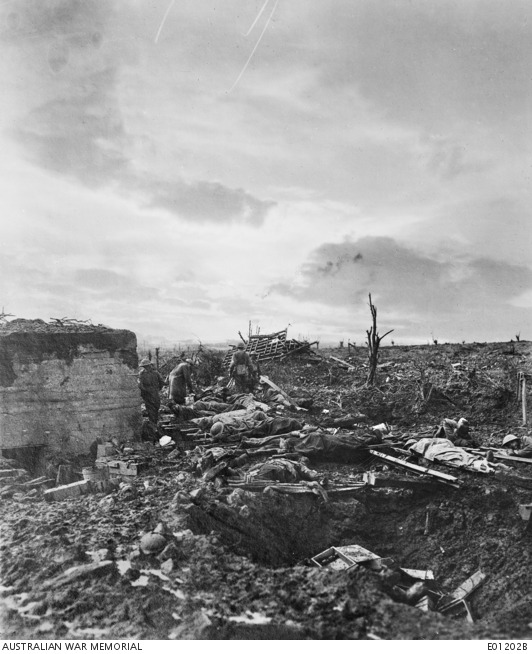
AWM E01202B
This is a Hurley composite based on image E01202. See E01202A for a similar composite image. See E01202K for position of those named in this caption.
E01202K:
Reference image only to provide position detail for those named. This image is not for sale. Australian infantry wounded at a First Aid Post near Zonnebeke Railway Station. There are two conflicting sets of identification supplied for this image. Identified: Private A W Moss, 9th FAB (1); Private V E Reid, 10th FAB (2); 2nd Corporal P Pratt, 10th FAB, or Staff Sergeant F W Gray 9th FAB (3); Private C R Costain 10th FAB or Private J Cooke, 9th FAB (4). The pillbox (left) is identified as 'Jury'. - E01202K
41 notes
·
View notes
Photo

El Paso Herald - Oct 2 1914
Thirty-one Transport Ships and 11 War Vessels Assist Big Movement. Montreal. Que, Oct. 2. There were no cheering crowds to see Canada's troops sail for England; in fact, very few people knew the greatest troop movement overseas in the history of the western continent was under way. According to the following description sent by the correspondent for the Daily Mail: "Thirty-one ships were required to carry the men, the guns, the horses and the supplies of the overseas expeditionary force. To convoy that number of ships a fleet of 11 war vessels was requisitioned, the whole movement being the largest and most important ever effected on the Atlantic it was carried out in a splendid manner. The movement from Valcartier was effected in fine style and the embarkation and sailing followed as a part of a well ordered plan. The movement of 31,300 troops and 8000 horses was the biggest war action that Canada has ever undertaken and it was performed almost faultlessly.
Troops Board Ships.
"The troops that moved in took possession of the wharf and the breakwater and when they disappeared one day the red coats ot the 87th regiment replaced the khaki suits of the men of the 12th battalion. In eight days the divisions moved out of Valcartier. Horses, artillery and transport wagons came over the 18 miles of road, while the troops were sent by train. It required five days to transfer the various units, an average of ten troops moving from the camp every day. The trains ran directly to the breakwater and the transfer to the ships was made promptly As the ships were filled they moved off and steamed down the river to anchorages previously agreed on and there met the naval convoy: afterwards the great fleet set out to sea."
12 notes
·
View notes
Text
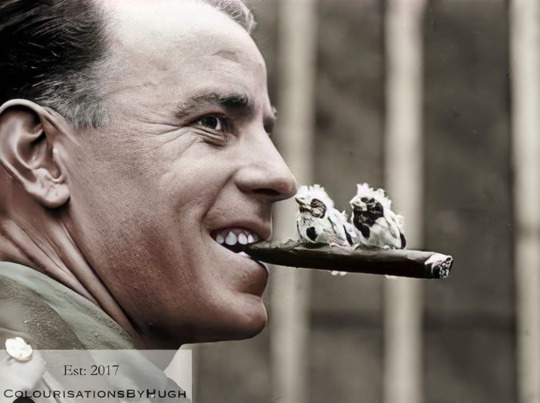
Colourized by Hugh
Canaries in WWI
Aug 26 1918 #OTD At Neulette, war photographer Thomas Keith Aitken photos of a General Service Corp officer posing with canaries on his cigar.
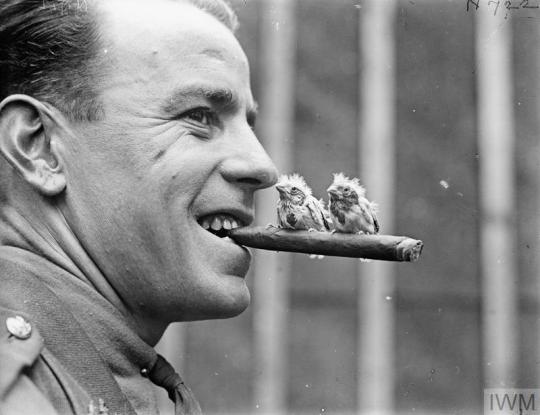
IWM Q 11250
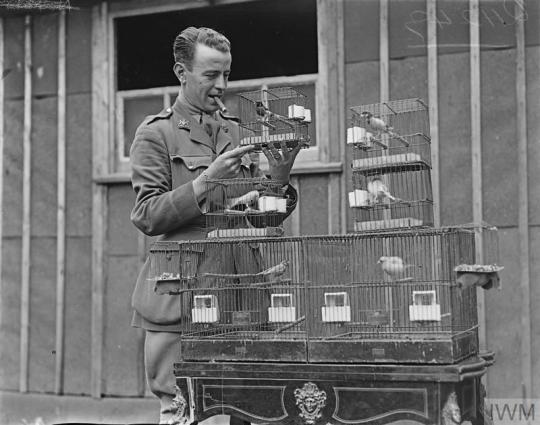
IWM Q 11249

May 7 1918 a British official photographer takes this photo, IWM Q 10949, of an Officer and one of his soldiers tending canaries rescued in the war area. Neulette.
7 May 1918-05-07
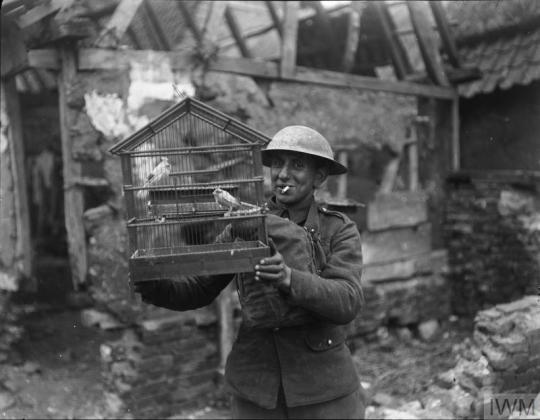
Apr 1918 War photographer Thomas Keith Aitken takes this photo, IWM Q 10903, of a soldier with a cage of canaries from a ruined house in St. Venant.
15 April 1918-04-15
35 notes
·
View notes
Photo

Illinois newspaper The Rock Island Argus #OTD Sep 19 1914 publishes this picture of German officers with their Pickelhaube helmets laying in a meadow trying to decode orders from the General Staff.
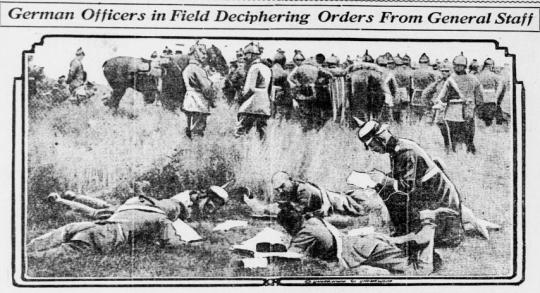
25 notes
·
View notes
Photo

"The German paper from which this interesting photograph is taken describes it as follow: ‘the Russians made this raft and put on it some scarecrows in uniform and an imitation gun. They let it float down the Memel River near Ragnit at dusk, in order that the Germans might fire on it, and thus they would obtain information of their strength and position. This ruse was, however, detected, and the plan failed.' The Memel is the name given to the last seventy miles of the Niemen, where it flows through the north-eastern corner of East Prussia, passing Tilsit. [Now the river forms the northern border of Kaliningrad Oblast, Russia's western exclave, and Lithuania] The greater part of the Niemen's five hundred miles course is through Russian territory. In the Pillkallen district of East Prussia, a little south of the Memel, the Russians recently resumed the offensive."
Illustrated War News Feb 3 1915

The Chickasha Daily Express., Apr 3 1916
32 notes
·
View notes
Text
Giant Balls
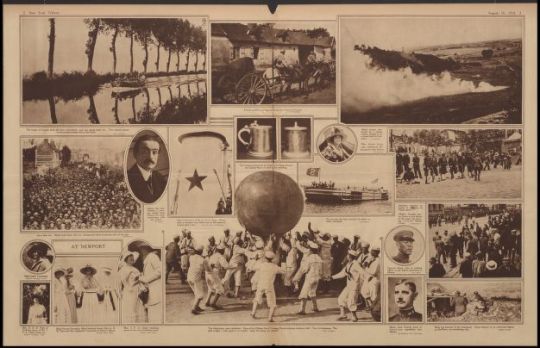
New-York Tribune - Aug 18 1918
The Atlas stunt, with variations. Boys of the Pelham Naval Training Station playing medicine ball. Yes, it's strenuous. The ball weighs well, anyhow, it weighs. Only the husky are eligible. Paul Thompson.
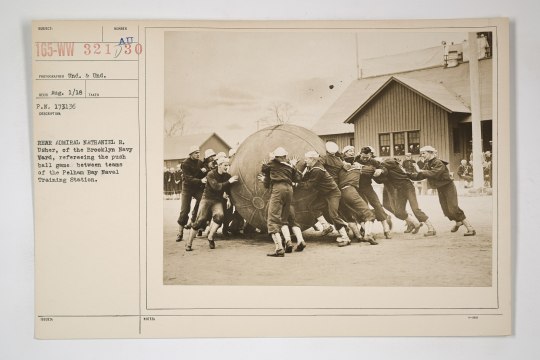
National Archives Identifier:45510134 Local Identifier:165-WW-321D-30
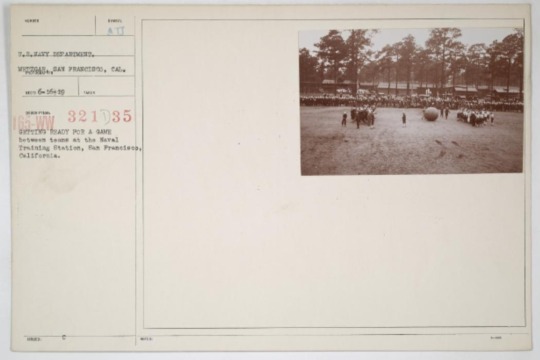
Getting ready for a game between teams at the Naval Training Station, San Francisco, California
National Archives Identifier:45510144 Local Identifier:165-WW-321D-35

National Archives Identifier:45510142 Local Identifier:165-WW-321D-34
Crowd witnessing one of the games at the Naval Training Station, Navy Yard, Charlestown, S.C
13 notes
·
View notes
Photo
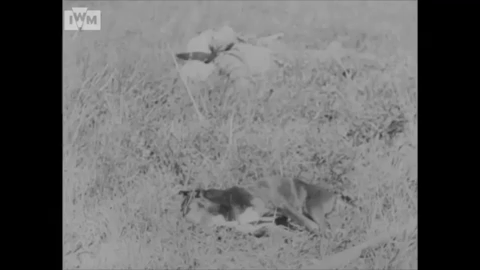
Lieutenant-Colonel Harold Lewis, 37th Lancers (Baluch Horse), Indian Army was in the UK when war broke out. As such he was given command of 20 Manchester Regiment.

Authors of "Ghosts on the Somme: Filming the Battle, June–July 1916" write that Jul 1 1916 he left trench, armed only with walking stick & his dog. His unit had stalled and he was trying to get his men moving during the final phase of the attack on Fricourt and Mametz by attacking up the Willow Stream Valley. While advancing both were KIA by Machine Gun fire from the direction of Caterpillar Wood.
This clip from the film "Battle of the Somme", IWM IWM 191 (Part 4), released #OTD Aug 11 1916, shows a soldier's body and a dog. Most likely that of LC Harold Lewis.
While watching "The Battle of the Somme" movie in theatres in 1916, Lewis's niece "recognized the bodies of the dog and his master." Lewis was the son of Captain Ernest Lewis (late Scots Fusiliers), of Red House, Guildford; husband of Eleanor Mary Lewis, of 37 Hill Lane, Southampton.
21 notes
·
View notes
Text
Women's machine gun squad
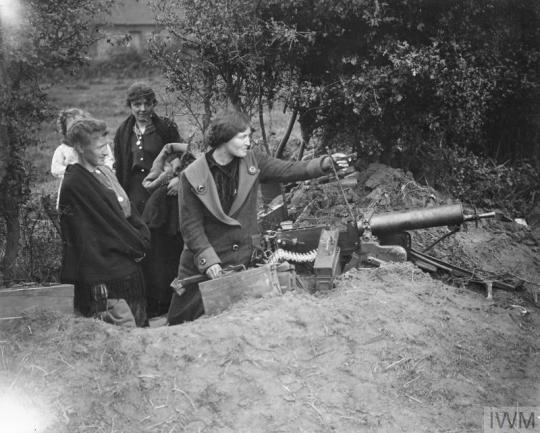
Oct 15 1918 #OTD Near Heule, Belgium, war photographer John Warwick Brooke takes this photo, IWM Q 7122, of Belgian civilian women examining a German Maxim machine gun post which was outside their cottage during the Battle of Courtrai.
October 15 1918-10-15
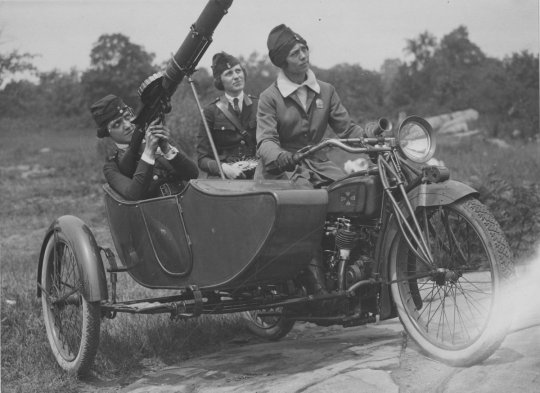
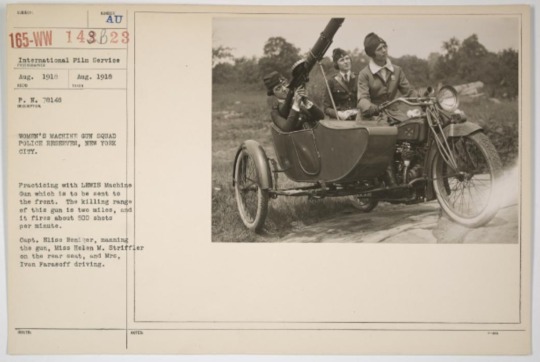
Women's machine gun squad police reserves, New York City. Practicing with Lewis Machine Gun which is to be sent to the front. The killing range of this gun is 2 miles and it fires 500 shots per minute. Captain Elise Reniger, manning the gun, Miss Helen M. Striffler on the rear seat, and Mrs. Ivan Farasoff driving.
National Archives Identifier:31474833 Local Identifier:165-WW-143B-23
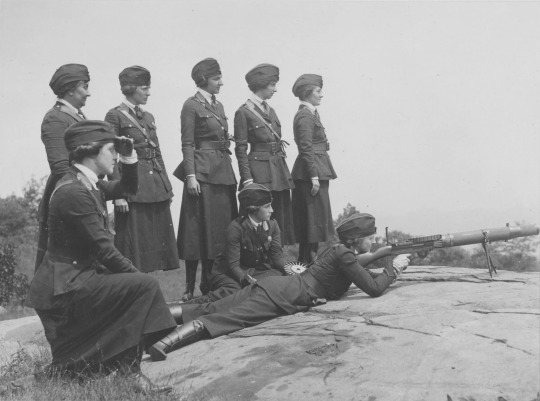
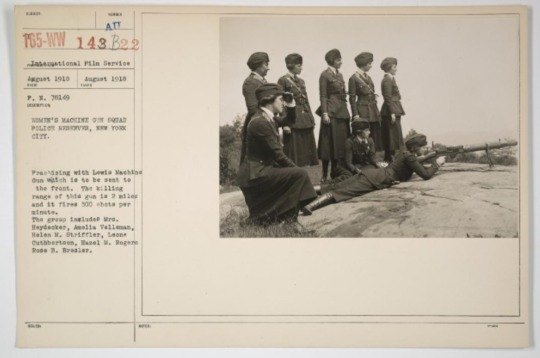
Women's machine gun squad police reserves, New York City. Practicing with Lewis Machine Gun which is to be sent to the front. The killing range of this gun is 2 miles and it fires 500 shots per minute. The group includes Mrs. Heydecker, Amelia Velleman, Helen M. Striffler, Leone Cuthbertson, Hazel M. Rogers, Rose B. Breler.
National Archives Identifier:31474831 Local Identifier:165-WW-143B-22

Teaching women to shoot at the Wakefield, Massachusetts rifle range. The women are learning the art under the direction of a sergeant of Marines
National Archives Identifier:31474799 Local Identifier:165-WW-143B-6
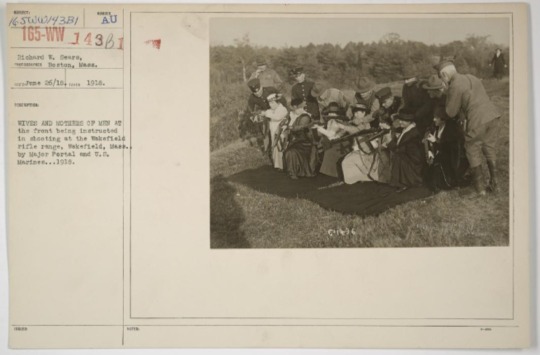
Wives and mothers of men at the front being instructed in shooting at the Wakefield rifle range, Wakefield, Massachusetts., by Major Portal and U.S. Marines. 1918
National Archives Identifier:31474789 Local Identifier:165-WW-143B-1

Captain Beihl U.S.A. instructs women physical culture teacher in military training at Lane High School, Chicago, Illinois
National Archives Identifier:31474811 Local Identifier:165-WW-143B-12
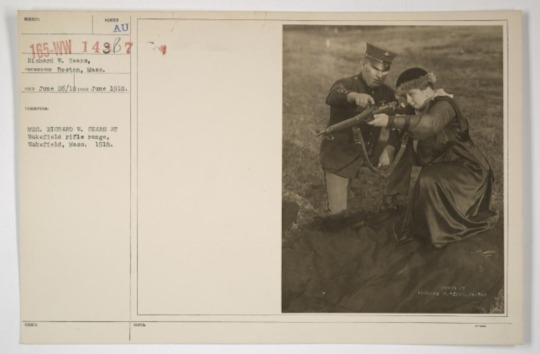
Mrs. Richard W. Sears at Wakefield rifle range, Wakefield, Massachusetts. 1918
National Archives Identifier:31474801 Local Identifier:165-WW-143B-7
46 notes
·
View notes
Text

National Archives Identifier:55224544 Local Identifier:111-SC-32694
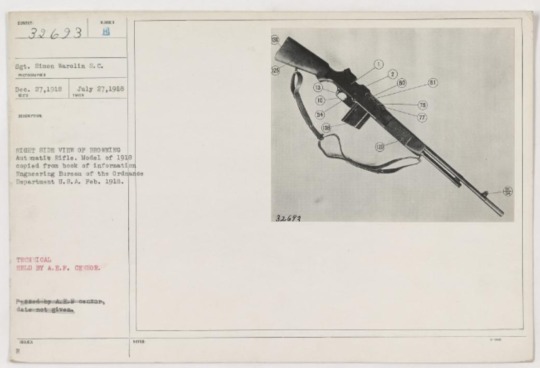
National Archives Identifier:55224542 Local Identifier:111-SC-32693
Nov 9 1918 with a BAR
Nov 9 1918 OTD At the Ordnance Department at Chaumont, France, a US official photographer takes these photos of an American soldier displaying an M1918 Browning automatic rifle. The Browning Automatic Rifle (BAR) was developed late in the war. The first rifles were mass produced in the summer of 1918 but once the military industrial complex focused on the machine gun it was able to deliver 52,000 BARs by all sources by the end of the war. The first US Army unit to receive them was the 79th Infantry Division, which first fired on the Imperial German on Sep 13 1918.

IWM Q 81473

NARA - 55223871 - Cpl L.H. McLaughlin, S.C.
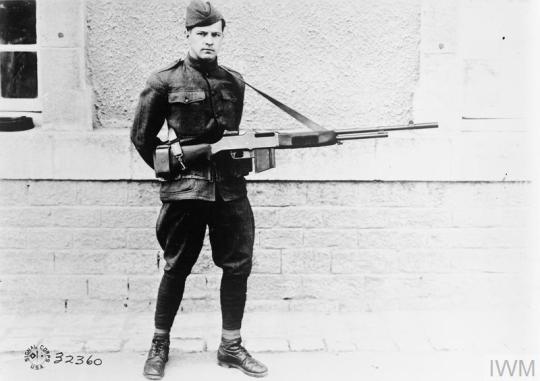
IWM Q 57008
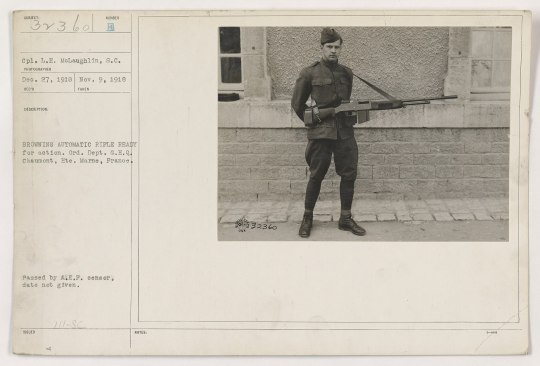
NARA - 55223874 - Cpl L.H. McLaughlin, S.C.
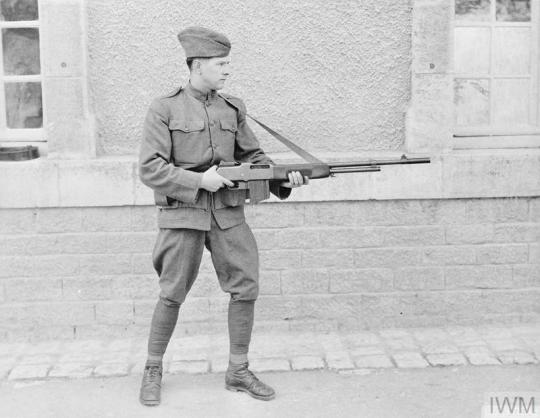
IWM Q 69553

NARA - 55223869 - Sgt Jack Abbot 9 November 1918-11-09

IWM Q 69679
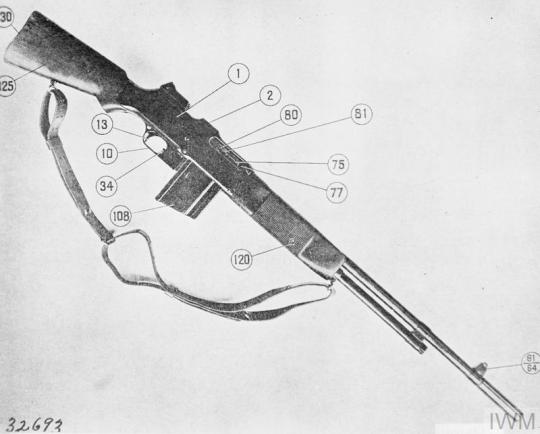
IWM Q 70177
100 notes
·
View notes